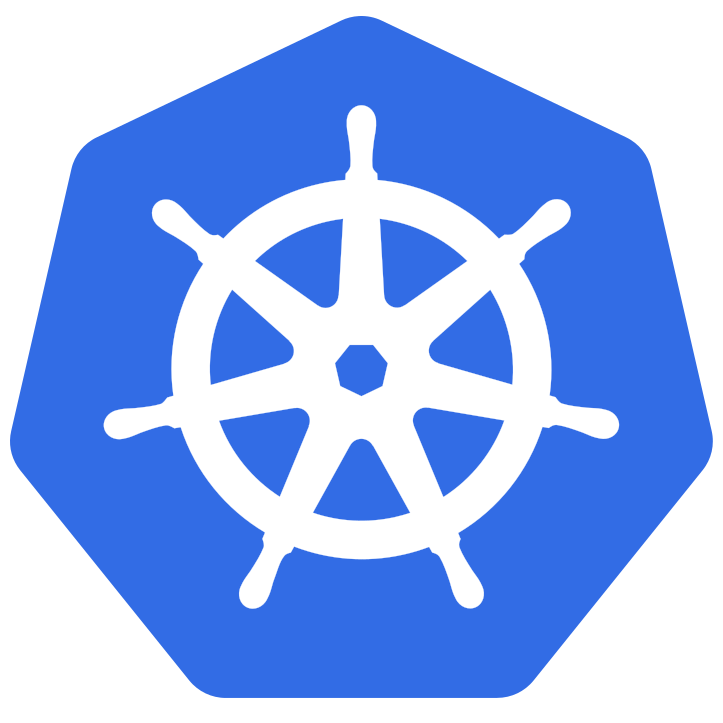CKS证书学习资料汇编
真题①基于1.22版本
前言
CKA 和 CKS 是 LINUX 基金会联合 CNCF社区组织的云原生技术领域权威认证,考试采用实操方式进行。CKS全称是Kubernetes安全专家认证,它在一个模拟真实的环境中测试考生对Kubernetes和云安全的知识。在参加CKS考试之前,必须已经通过CKA(Kubernetes管理员认证),在获得CKA认证之后才可以预约CKS考试。CKS 的考试难度相对于 CKA 提高了很多,2个小时的考试时间很紧张,因为考试是在外网上进行,这两个考试又是实操考试,网络条件不好,很影响效率,如果不抓紧的话,很可能做不完所有实操题。提醒备考的同学善用考试软件提供的 notepad 功能,先把 yaml 文件或命令写到notepad里,再粘贴到 terminal里。
我因为上次 CKA 考试还是比较顺利,94 高分通过,所以这次的 CKS 考试有点疏忽了,搞忘带身份证和护照,CKA/CKS 考试需要身份证+护照/信用卡,因此跟监考老师沟通了很久时间,最后修改了考试人姓名为中文,是用驾驶证完成的考试。意外之喜是 CKS 给我的证书是中文名的。
我这次考试的 kubernetes 版本是 1.22,特意记录了一下考试会考到的知识点,分享给需要的同学。
1. NetworkPolicy
通常使用标签选择器来选择pod,控制流量。所以要对 kubectl label的使用方法熟悉起来。
1 | kubectl label [--overwrite] (-f FILENAME | TYPE NAME) KEY_1=VAL_1 ... KEY_N=VAL_N |
网络策略的实用方法见注释
1 | apiVersion: networking.k8s.io/v1 |
2. Apparmor
查看当前节点加载的 apparmor profile ,如果没有加载,要手工加载
1 | apparmor_status | grep nginx |
cks 考试的 apparmor profile 文件内容:
1 |
|
注意: nginx-profile-3 这一行要确保注释掉,考试环境提供的可能没有注释,加载配置文件按时会报错
1 | root@node01:~# apparmor_parser /etc/apparmor.d/nginx_apparmor |
修改 pod yaml 文件,在注释里设置为 podx 加载 apparmor profile
1 | annotations: |
yaml 文件内容如下:
1 | apiVersion: v1 |
3. 修复kube-bench发现的安全问题
kube-bench 是一个 CIS 评估工具,扫描 kubernetes 集群存在的安全问题,基本上按照 扫描结果的修复建议进行修复就可以了,系统会给出很具体的修复措施。
1 | # 修复 kube-apiserver 安全问题 |
4. 解决 pod 的 serviceaccount 设置错误问题
这个题要注意 serviceaccount 有个选项 automountServiceAccountToken, 这个选项决定是否自动挂载 secret 到 pod。
有这个选项,我们可以控制 pod 创建并绑定 serviceaccount 时,不自动挂载对应的 secret,这样 pod 就没有权限访问 apiserver,提高了业务 pod 的安全性。
可以在 serviceaccount 和 pod 的 spec 里设置,pod的设置优先于 serviceaccount 里的设置。
1 | apiVersion: v1 |
删除未使用的 serviceaccount
5. 设置默认网络策略
这道题是送分题,设置默认拒绝所有出站和入站的 pod 流量,基本上可以参考官网的案例直接改一下名字就可以了
默认网络策略
6. RBAC
这道题也基本是送分题,参考官网文档,根据题目要求,设置 role 的 资源访问权限,绑定到 serviceaccount 就可以了。
RBAC
7. 日志审计
这道题稍复杂,需要按照要求启动日志审计,包括两个步骤:
(1) 编写日志审计策略文件
日志审计策略
1 | apiVersion: audit.k8s.io/v1 |
(2) 修改 kube-apiserver.yaml配置文件,启用日志审计策略,日志策略配置文件位置、日志文件存储位置、循环周期。
启动日志配置
vi /etc/kubernetes/manifests/kube-apiserver.yaml
1 | # 设置日志审计策略文件在 pod 里的 mount 位置 |
重启 kubelet
1 | systemctl daemon-reload |
8. 创建 secret
这道题考解码 secret 的 base64 编码信息,创建新的 secret 并 mount 到 pod 的特定位置。
解码 secret
1 | kubectl get secrets -n istio-system db1-test -o jsonpath={.data.username} | base64 -d > /cks/sec/user.txt |
1 | kubectl create secret generic db2-test -n istio-system --from-literal=username=production-instance --from-literal=password=KvLftKgs4aVH |
1 | apiVersion: v1 |
9. 检测 dockerfile 的不安全指令
这道题也是送分题,主要是把 dockerfile里两个 使用了 root 用户的指令删除,把添加特定能力的 securityContext 安全上下文注释掉。
1 | 删除两处 |
10. 运行沙箱容器
给出了 支持安全沙箱容器运行时 handler runsc, 我们需要创建一个 RuntimeClass 并在 pod spec里指定是用该 RuntimeClass
参考资料
- 创建 RuntimeClass
1 | apiVersion: node.k8s.io/v1beta1 |
- 修改 server 命名空间 所有 pod,设置 runtimeClassName
1 | 注意:运行中的 pod 只能修改有限的几个属性,不支持修改 RuntimeClass,需要将所有 pod 的 yaml 解析出来,修改 yaml 后,再重新创建 pod |
11. 删除 不符合最佳实践的 pod
- 删除启用了特权的 pod
主要是检查 pod 是否含 privileged: true
kubectl get po xxx -n production -o yaml| grep -i “privileged: true” - 删除有状态 pod
kubectl get pods XXXX -n production -o jsonpath={.spec.volumes} | jq
12. 扫描镜像安全漏洞并删除使用有安全漏洞镜像的pod
这道题考察对于镜像扫描工具 trivy 的使用
1 |
|
13. 使用 sysdig 检查容器里里的异常进程
本体考察是否掌握 sysdig 的基本用法,记住两个帮助命令:
- sysdig -h 查看 sysdig 帮助
- sysdig -l 查看 sysdig 支持的元数据
另外 sysdig 支持指定 containerid 分析特定容器
1 | # 查看容器id |
14. PodSecurityPolicy
这道题考察是否掌握 psp 的用法,包括5步骤
(1) 创建 psp
参考链接
1 | apiVersion: policy/v1beta1 |
(2) 创建 clusterrole,使用 psp
1 | kubectl create clusterrole restrict-access-role --verb=use --resource=psp --resource-name=restrict-policy |
(3) 创建 serviceaccount
1 | kubectl create sa psp-denial-sa -n staging |
(4) 绑定 clusterrole 到 serviceaccount
1 | kubectl create clusterrolebinding dany-access-bind --clusterrole=restrict-access-role --serviceaccount=staging:psp-denial-sa |
(5) 启用 PodSecurityPolicy
1 | vi /etc/kubernetes/manifests/kube-apiserver.yaml |
15. 启用 API server认证
这道题同前面 kube-bench 的考核内容有点重合,题目中是用 kubeamd创建的 kubernetes服务器权限设置有问题,允许未经授权的访问。
参考链接
需要进行以下修改:
- 使用 Node,RBAC 授权模式和 NodeRestriction 准入控制器
1 | vi /etc/kubernetes/manifests/kube-apiserver.yaml |
- 删除 system:anonymous 的 ClusterRolebinding角色绑定,取消匿名用户的集群管理员权限
1 | kubectl delete clusterrolebinding system:anonymous |
16. ImagePolicyWebhook
这道题考察 ImagePolicyWebhook 准入控制器的使用,分4个步骤
- 修改控制器配置文件,将未找到有效后端时的默认拒绝改为默认不拒绝
参考链接
vi /etc/kubernetes/epconfig/admission_configuration.json
1 | { |
- 修改 控制器访问 webhook server 的 kubeconfig
1 | vi /etc/kubernetes/epconfig/kubeconfig.yaml |
- 启用ImagePolicyWebhook
vi /etc/kubernetes/manifests/kube-apiserver.yaml
1 | # 启用 ImagePolicyWebhook |
- 测试是否生效
1 | systemctl daemon-reload |
From: 2022年2月我的CKS备考记录 - scwang18 - 博客园 (cnblogs.com)
真题②基于1.26版本
考试内容
CKS 考试链接
Important Instructions: CKS
- 考试包括 15-20 项performance-based tasks。
- 2023.1 实测是16道题
- 考生有 2 小时的时间完成 CKS 考试。
- 因为从06/2022开始环境升级(贬义),考试环境更难用了,变的很卡,所以时间变得比较紧张。容易做不完题,建议先把有把握的,花费时间不多的题先做掉
- CKS考试67分以上即可通过,考试不通过有一次补考机会。
Certifications- expire 36 months from the date that the Program certification requirements are met by a candidate.
Certified Kubernetes Security Specialist (CKS)
The following tools and resources are allowed during the exam as long as they are used by candidates to work independently on exam tasks (i.e. not used for 3rd party assistance or research) and are accessed from within the Linux server terminal on which the Exam is delivered.
During the exam, candidates may:
- review the Exam content instructions that are presented in the command line terminal.
- review Documents installed by the distribution (i.e. /usr/share and its subdirectories)
- use the search function provided on https://kubernetes.io/docs/ however, they may only open search results that have a domain matching the sites listed below
- use the browser within the VM to access the following documentation:
- Kubernetes Documentation:
- https://kubernetes.io/docs/ and their subdomains
- https://kubernetes.io/blog/ and their subdomains
This includes all available language translations of these pages (e.g. https://kubernetes.io/zh/docs/)
- Tools:
- Trivy documentation https://aquasecurity.github.io/trivy/
- Falco documentation https://falco.org/docs/
This includes all available language translations of these pages (e.g. https://falco.org/zh/docs/)
- App Armor:
- Kubernetes Documentation:
You’re only allowed to have one other browser tab open with:
- https://kubernetes.io/docs
- https://github.com/kubernetes
- https://kubernetes.io/blog
- https://github.com/aquasecurity/trivy
- https://falco.org/docs
- https://gitlab.com/apparmor/apparmor/-/wikis/Documentation
CKS Environment
- Each task on this exam must be completed on a designated cluster/configuration context.
- Sixteen clusters comprise the exam environment, one for each task. Each cluster is made up of one master node and one worker node.
- An infobox at the start of each task provides you with the cluster name/context and the hostname of the master and worker node.
- You can switch the cluster/configuration context using a command such as the following:
kubectl config use-context <cluster/context name>- Nodes making up each cluster can be reached via ssh, using a command such as the following:
ssh <nodename>- You have elevated privileges on any node by default, so there is no need to assume elevated privileges.
- You must return to the base node (hostname cli) after completing each task.
- Nested
−sshis not supported. - You can use
kubectland the appropriate context to work on any cluster from the base node. When connected to a cluster member via ssh, you will only be able to work on that particular cluster via kubectl. - For your convenience, all environments, in other words, the base system and the cluster nodes, have the following additional command-line tools pre-installed and pre-configured:
kubectlwith kalias and Bash autocompletionyqandjqfor YAML/JSON processingtmuxfor terminal multiplexingcurlandwgetfor testing web servicesmanand man pages for further documentation
- Further instructions for connecting to cluster nodes will be provided in the appropriate tasks
- The CKS environment is currently running etcd v3.5
- The CKS environment is currently running Kubernetes v1.26
- The CKS exam environment will be aligned with the most recent K8s minor version within approximately 4 to 8 weeks of the K8s release date.
More items for CKS than CKA and CKAD
- Pod Security Policies(PSP) - removed from Kubernetes in
v1.25 - AppArmor
- Apiserver
- Apiserver Crash
- Apiserver NodeRestriction
- ImagePolicyWebhook
- kube-bench
- Trivy
CKS 知识点&练习题总结
如何备考
k8s练习环境(同CKA)
CKS练习题
有几个练习库,建议将每个题目都自己亲自操作一遍,一定要操作。
- CKS在线练习环境:https://killercoda.com/killer-shell-cks
- CKS Simulator Kubernetes 1.26
- Adminission pligin/Pod Security Policies 练习
CKS课程
- 【需付费】CKS考试-对应官方课程Kubernetes for Developers (LFS260) 感觉没必要买,只看官方文档就足够了。
常用命令
1 | # 不熟 |
CKS 2023 真题 1.26
考题1 - AppArmor 访问控制
Context
AppArmor is enabled on the cluster’s worker node. An AppArmor profile is prepared, but not enforced yet.
You may use your browser to open one additional tab to access the AppArmor documentation.
AppArmor 已在 cluster 的工作节点上被启用。一个 AppArmor 配置文件已存在,但尚未被实施。
Task
On the cluster’s worker node, enforce the prepared AppArmor profile located at /etc/apparmor.d/nginx_apparmor .
Edit the prepared manifest file located at /home/candidate/KSSH00401/nginx-deploy.yaml to apply the AppArmor profile.
Finally, apply the manifest file and create the pod specified in it.
在 cluster 的工作节点上,实施位于 /etc/apparmor.d/nginx_apparmor 的现有 AppArmor 配置文件。
编辑位于 /home/candidate/KSSH00401/nginx-deploy.yaml 的现有清单文件以应用 AppArmor 配置文件。
最后,应用清单文件并创建其中指定的 Pod 。
Solution
搜索 apparmor(使用 AppArmor 限制容器对资源的访问),接着再搜索字符串 “parser”
https://kubernetes.io/zh/docs/tutorials/security/apparmor/
1 | ## 远程登录到指定工作节点 |
考题2 - Kube-Bench 基准测试
Context
A CIS Benchmark tool was run against the kubeadm-created cluster and found multiple issues that must be addressed immediately.
针对 kubeadm 创建的 cluster 运行 CIS 基准测试工具时, 发现了多个必须立即解决的问题。
Task
Fix all issues via configuration and restart theaffected components to ensure the new settings take effect.
通过配置修复所有问题并重新启动受影响的组件以确保新的设置生效。
Fix all of the following violations that were found against the API server:
修复针对 API 服务器发现的所有以下违规行为:
Ensure that the 1.2.7 –authorization-mode FAIL argument is not set to AlwaysAllow
Ensure that the 1.2.8 –authorization-mode FAIL argument includes Node
Ensure that the 1.2.9 –authorization-mode FAIL argument includes RBAC
Ensure that the 1.2.18 –insecure-bind-address FAIL argument is not set
Ensure that the 1.2.19 –insecure-port FAIL argument is set to 0
Fix all of the following violations that were found against the kubelet:
修复针对 kubelet 发现的所有以下违规行为:
Ensure that the 4.2.1 –anonymous-auth FAIL argument is set to false
Ensure that the 4.2.2 –authorization-mode FAIL argument is not set to AlwaysAllow
Use Webhook authn/authz where possible. 注意:尽可能使用 Webhook authn/authz。
Fix all of the following violations that were found against etcd:
修复针对 etcd 发现的所有以下违规行为:
Ensure that the 4.2.1 –client-cert-auth FAIL argument is set to true
Solution
1 | $ ssh [email protected] |
考题3 - Trivy 镜像扫描
Task
使用 Trivy 开源容器扫描器检测 namespace kamino 中 Pod 使用的具有严重漏洞的镜像。
查找具有 High 或 Critical 严重性漏洞的镜像,并删除使用这些镜像的 Pod。
注意:Trivy 仅安装在 cluster 的 master 节点上,在工作节点上不可使用。你必须切换到 cluster 的 master 节点才能使用 Trivy 。
Use the Trivy open-source container scanner to detect images with severe vulnerabilities used by Pods in the namespace kamino.
Look for images with High or Critical severity vulnerabilities, and delete the Pods that use those images.
Trivy is pre-installed on the cluster’s master node only; it is not available on the base system or the worker nodes. You’ll have to connect to the cluster’s master node to use Trivy.
Solution
搜索 kubectl images(列出集群中所有运行容器的镜像)
https://kubernetes.io/zh-cn/docs/tasks/access-application-cluster/list-all-running-container-images/
1 | ### 需登录到控制节点操作 |
考题4 - Sysdig & Falco
you may use you brower to open one additonal tab to access sysdig’s documentation or Falco’s documentaion
Task
Use runtime detection tools to detect anomalous processes spawning and executing frequently in the sigle container belonging to Pod redis. Two tools are avaliable to use:
使用运行时检测工具来检测 Pod tomcat 单个容器中频发生成和执行的异常进程。有两种工具可供使用:
- sysdig
- falco
The tools are pre-installed on the cluster’s worker node only, they are not avaliable on the base system or the master node.
Using the tool of you choice (including any non pre-install tool) analyse the container’s behavior for at least 30 seconds, using filers that detect newly spawing and executing processes, store an incident file at /opt/KSR00101/incidents/summary, containing the detected incidents one per line in the follwing format:
注:这些工具只预装在 cluster 的工作节点,不在 master 节点。
使用工具至少分析 30 秒,使用过滤器检查生成和执行的进程,将事件写到 /opt/KSR00101/incidents/summary 文件中,其中包含检测的事件, 每个单独一行
格式如下:
1 | [timestamp],[uid],[processName] |
保持工具的原始时间戳格式不变。
注:确保事件文件存储在集群的工作节点上。
1 | # 方法一 sysdig |
考题5 - ServiceAccount
Context
A Pod fails to run because of an incorrectly specified ServiceAcccount.
Task
create a new ServiceAccount named backend-sa in the existing namespace qa, which must not have access to any secrets.
Inspect the Pods in the namespace
1
qa
.
- Edit the Pod to use the newly created serviceAccount
backend-sa. - Ensure that the modified specification is applied and the Pod is running.
- Edit the Pod to use the newly created serviceAccount
Finally, clean-up and delete the now unused serviceAccount in the namespace
qa.
在现有 namespaceqa中创建一个名为backend-sa的新 ServiceAccount, 确保此 ServiceAccount 不自动挂载secrets。
使用/cks/9/pod9.yaml中的清单文件来创建一个 Pod。
最后,清理 namespaceqa中任何未使用的 ServiceAccount。
Solution
搜索 serviceaccount(为Pod配置服务账号),接着再搜索字符串 “automount”
https://kubernetes.io/zh-cn/docs/tasks/configure-pod-container/configure-service-account/
1 | ### 创建 ServiceAccount |
考题6 - 2022真题v1.20 Pod 安全策略-PodSecurityPolicy
2023的最新考试已经没有这道题了,替代的是Pod Security Standard
Context6
A PodsecurityPolicy shall prevent the creation on of privileged Pods in a specific namespace.
PodSecurityPolicy 应防止在特定 namespace 中特权 Pod 的创建。
Task6
Create a new PodSecurityPolicy named restrict-policy, which prevents the creation of privileged Pods.
Create a new ClusterRole named restrict-access-role, which uses the newly created PodSecurityPolicy restrict-policy.
Create a new serviceAccount named psp-denial-sa in the existing namespace staging.
Finally, create a new clusterRoleBinding named dany-access-bind, which binds the newly created ClusterRole restrict-access-role to the newly created serviceAccount psp-denial-sa.
创建一个名为 restrict-policy 的新的 PodSecurityPolicy,以防止特权 Pod 的创建。
创建一个名为 restrict-access-role 并使用新创建的 PodSecurityPolicy restrict-policy 的 ClusterRole。
在现有的 namespace staging 中创建一个名为 psp-denial-sa 的新 ServiceAccount 。
最后,创建一个名为 dany-access-bind 的 ClusterRoleBinding,将新创建的 ClusterRole restrict-access-role 绑定到新创建的 ServiceAccount psp-denial-sa。
你可以在一下位置找到模版清单文件: /cks/psp/psp.yaml
Solution6
搜索 runasany(Pod Security Policy)
https://kubernetes.io/id/docs/concepts/policy/pod-security-policy/
搜索 clusterrole(使用RBAC鉴权)
https://kubernetes.io/zh-cn/docs/reference/access-authn-authz/rbac/
1 | ### (1)创建 psp |
考题6 - 2023真题V1.26 Pod Security Standard
Task weight: 8%
Use context: kubectl config use-context workload-prod
There is Deployment container-host-hacker in Namespace team-red which mounts /run/containerd as a hostPath volume on the Node where it’s running. This means that the Pod can access various data about other containers running on the same Node.
To prevent this configure Namespace team-red to enforce the baseline Pod Security Standard. Once completed, delete the Pod of the Deployment mentioned above.
Check the ReplicaSet events and write the event/log lines containing the reason why the Pod isn’t recreated into /opt/course/4/logs.
Answer
Making Namespaces use Pod Security Standards works via labels. We can simply edit it:
1 | k edit ns team-red |
Now we configure the requested label:
1 | # kubectl edit namespace team-red |
This should already be enough for the default Pod Security Admission Controller to pick up on that change. Let’s test it and delete the Pod to see if it’ll be recreated or fails, it should fail!
1 | ➜ k -n team-red get pod |
Usually the ReplicaSet of a Deployment would recreate the Pod if deleted, here we see this doesn’t happen. Let’s check why:
1 | ➜ k -n team-red get rs |
There we go! Finally we write the reason into the requested file so that Mr Scoring will be happy too!
1 | # /opt/course/4/logs |
Pod Security Standards can give a great base level of security! But when one finds themselves wanting to deeper adjust the levels like baseline or restricted… this isn’t possible and 3rd party solutions like OPA could be looked at.
考题7 - NetworkPolicy - default-deny
Context
A default-deny NetworkPolicy avoids to accidentally expose a Pod in a namespace that doesn’t have any other NetworkPolicy defined.
一个默认拒绝(default-deny)的 NetworkPolicy 可避免在未定义任何其他 NetworkPolicy 的 namespace 中意外公开 Pod。
Task
Create a new default-deny NetworkPolicy named denynetwork in the namespace development for all traffic of type Ingress.
The new NetworkPolicy must deny all ingress traffic in the namespace development.
Apply the newly created default-deny NetworkPolicy to all Pods running in namespace development.
You can find a skeleton manifest file at /cks/15/p1.yaml
为所有类型为 Ingress+Egress 的流量在 namespace testing 中创建一个名为 denynetwork 的新默认拒绝 NetworkPolicy。 此新的 NetworkPolicy 必须拒绝 namespace testng 中的所有的 Ingress + Egress 流量。
将新创建的默认拒绝 NetworkPolicy 应用与在 namespace testing 中运行的所有 Pod。
你可以在 /cks/15/p1.yaml 找到一个模板清单文件。
1 | ### 修改模板清单文件 |
考题8 - NetworkPolicy
Task
create a NetworkPolicy named pod-restriction to restrict access to Pod products-service running in namespace dev-team.
Only allow the following Pods to connect to Pod products-service:
- Pods in the namespace
qa - Pods with label
environment: testing, in any namespace
Make sure to apply the NetworkPolicy.
You can find a skelet on manifest file at /cks/6/p1.yaml
创建一个名为 pod-restriction 的 NetworkPolicy 来限制对在 namespace dev-team 中运行的 Pod products-service 的访问。只允许以下 Pod 连接到 Pod products-service:
- namespace
qa中的 Pod - 位于任何 namespace,带有标签
environment: testing的 Pod
注意:确保应用 NetworkPolicy。
你可以在/cks/net/po.yaml 找到一个模板清单文件。
Solution
搜索 networkpolicy(网络策略)
https://kubernetes.io/zh-cn/docs/concepts/services-networking/network-policies/
1 | ### (1)查看命名空间 qa 具有的标签 |
考题9 - RBAC
Context
绑定到 Pod 的 ServiceAccount 的 Role 授予过度宽松的权限。完成以下项目以减少权限集。
A Role bound to a Pod’s serviceAccount grants overly permissive permissions.
Complete the following tasks to reduce the set of permissions.
Task
一个名为 web-pod 的现有 Pod 已在 namespace db 中运行。编辑绑定到 Pod 的 ServiceAccount service-account-web 的现有 Role, 仅允许只对 services 类型的资源执行 get 操作。
- 在 namespace
db中创建一个名为role-2,并仅允许只对namespaces类型的资源执行delete操作的新 Role。 - 创建一个名为
role-2-binding的新 RoleBinding,将新创建的 Role 绑定到 Pod 的 ServiceAccount。
注意:请勿删除现有的 RoleBinding。
Given an existing Pod named web-pod running in the namespace db. Edit the existing Role bound to the Pod’s serviceAccount sa-dev-1 to only allow performing list operations, only on resources of type Endpoints.
- create a new Role named
role-2in the namespacedb, which only allows performingupdateoperations, only on resources of typepersistentvolumeclaims - create a new RoleBinding named
role-2-bindingbinding the newly created Role to the Pod’s serviceAccount.
Don’t delete the existing RoleBinding
solution
搜索 clusterrole(使用RBAC鉴权)
https://kubernetes.io/zh-cn/docs/reference/access-authn-authz/rbac/
1 | ### 查询 sa 对应的 role 名称(假设是 role-1) |
考题10 - kube-apiserver 审计日志记录和采集
Task
Enable audit logs in the cluster.
To do so, enable the log backend, and ensure that:
- logs are stored at
/var/log/kubernetes/audit-logs.txt - log files are retained for
10days - at maximum, a number of
2auditlog files are retained
A basic policy is provided at/etc/kubernetes/logpolicy/sample-policy.yaml. it only specifies what not to log. The base policy is located on the cluster’smasternode.
Edit and extend the basic policy to log:
namespaceschanges atRequestResponselevel- the request body of pods changes in the namespace
front-apps configMapandsecretchanges in all namespaces at theMetadatalevel- Also, add a
catch-allruie to log all other requests at theMetadatalevel.
Don’t forget to apply the modifiedpolicy./etc/kubernetes/logpolicy/sample-policy.yaml
在 cluster 中启用审计日志。为此,请启用日志后端,并确保:
- 日志存储在
/var/log/kubernetes/audit-logs.txt - 日志文件能保留
10天 - 最多保留
2个旧审计日志文件
/etc/kubernetes/logpolicy/sample-policy.yaml 提供了基本策略。它仅指定不记录的内容。
注意:基本策略位于 cluster 的 master 节点上。
编辑和扩展基本策略以记录:
- RequestResponse 级别的 cronjobs 更改
- namespace front-apps 中 deployment 更改的请求体
- Metadata 级别的所有 namespace 中的 ConfigMap 和 Secret 的更改
- 此外,添加一个全方位的规则以在 Metadata 级别记录所有其他请求。
注意:不要忘记应用修改后的策略
Solution
搜索 audit(审计)
https://kubernetes.io/zh-cn/docs/tasks/debug/debug-cluster/audit/
1 | ### 如果没有 /var/log/kubernetes/,则创建目录 |
考题11 - Secret
Task
Retrieve the content of the existing secret named db1-test in the istio-system namespace.
store the username field in a file named /home/candidate/user.txt, and the password field in a file named /home/candidate/pass.txt.
You must create both files; they don’t exist yet.
Do not use/modify the created files in the following steps, create new temporary files if needed.
Create a new secret named db2-test in the istio-system namespace, with the following
1 | username : production-instance |
Finally, create a new Pod that has access to the secret db2-test via a volume:
- Pod name
secret-pod - Namespace
istio-system - container name
dev-container - image
nginx - volume name
secret-volume - mount path
/etc/secret
在 namespace istio-system 中获取名为 db1-test 的现有 secret 的内容.
将 username 字段存储在名为 /cks/sec/user.txt 的文件中,并将 password 字段存储在名为 /cks/sec/pass.txt 的文件中。
注意:你必须创建以上两个文件,他们还不存在。
注意:不要在以下步骤中使用/修改先前创建的文件,如果需要,可以创建新的临时文件。
在 istio-system namespace 中创建一个名为 db2-test 的新 secret,内容如下:
1 | username : production-instance |
最后,创建一个新的 Pod,它可以通过卷访问 secret db2-test :
- Pod 名称
secret-pod - Namespace
istio-system - 容器名
dev-container - 镜像
nginx - 卷名
secret-volume - 挂载路径
/etc/secret
Solution
搜索 secret(使用 kubectl 管理 Secret)
https://kubernetes.io/zh-cn/docs/tasks/configmap-secret/managing-secret-using-kubectl/
搜索 secret(Secret)
https://kubernetes.io/zh-cn/docs/concepts/configuration/secret/
1 | ### 检索已存在的 secret,将获取到的用户名和密码字段存储到指定文件 |
考题12 - dockerfile 和 deployment 安全优化
Task
- Analyze and edit the given Dockerfile (based on the ubuntu:16.04 image)
/cks/docker/Dockerfilefixing two instructions present in the file being prominent security/best-practice issues. - Analyze and edit the given manifest file
/cks/docker/deployment.yamlfixing two fields present in the file being prominent security/best-practice issues.
Don’t add or remove configuration settings; only modify the existing configuration settings, so that two configuration settings each are no longer security/best-practice concerns.
Should you need an unprivileged user for any of the tasks, use user nobody with user id 65535.
- 分析和编辑给定的 Dockerfile
/cks/docker/Dockerfile(基于 ubuntu:16.04 镜像),并修复在文件中拥有的突出的安全/最佳实践问题的两个指令。- 分析和编辑给定的清单文件
/cks/docker/deployment.yaml,并修复在文件中拥有突出的安全/最佳实践问题的两个字段。注意:请勿添加或删除配置设置;只需修改现有的配置设置让以上两个配置设置都不再有安全/最佳实践问题。
注意:如果您需要非特权用户来执行任何项目,请使用用户 ID 65535 的用户 nobody 。
答题: 注意,本次的 Dockerfile 和 deployment.yaml 仅修改即可,无需部署。
Solution 12
1 | ### 修复 dockerfile 文件中存在的两个安全/最佳实践指令 |
考题13 - admission-controllers - ImagePolicyWebhook
Context
A container image scanner is set up on the cluster, but it’s not yet fully integrated into the cluster’s configuration. When complete, the container image scanner shall scan for and reject the use of vulnerable images.
cluster 上设置了容器镜像扫描器,但尚未完全集成到 cluster 的配置中。完成后,容器镜像扫描器应扫描并拒绝易受攻击的镜像的使用。
Task
You have to complete the entire task on the cluster’s master node, where all services and files have been prepared and placed.
Given an incomplete configuration in directory /etc/kubernetes/epconfig and a functional container image scanner with HTTPS endpoint https://acme.local:8082/image_policy:
- Enable the necessary plugins to create an image policy
- validate the control configuration and change it to an implicit deny
- Edit the configuration to point to the provided HTTPS endpoint correctly.
- Finally , test if the configuration is working by trying to deploy the vulnerable resource
/cks/1/web1.yaml
You can find the container image scanner’s log file at /var/loglimagepolicyiacme.log
注意:你必须在 cluster 的 master 节点上完成整个考题,所有服务和文件都已被准备好并放置在该节点上。 给定一个目录 /etc/kubernetes/epconfig 中不完整的配置以及具有 HTTPS 端点 https://acme.local:8082/image_policy 的功能性容器镜像扫描器:
- 启用必要的插件来创建镜像策略
- 校验控制配置并将其更改为隐式拒绝(implicit deny)
- 编辑配置以正确指向提供的 HTTPS 端点
- 最后,通过尝试部署易受攻击的资源
/cks/img/web1.yaml来测试配置是否有效。
你可以在 /var/log/imagepolicy/roadrunner.log 找到容器镜像扫描仪的日志文件。
Solution
搜索 imagepolicywebhook(使用准入控制器),接着再搜索字符串”imagepolicywebhook”
https://kubernetes.io/zh-cn/docs/reference/access-authn-authz/admission-controllers/
1 | # 0 master node |
考题14 - 删除非无状态或非不可变的 pod
Context: it is best-practice to design containers to be stateless and immutable
Task
Inspect Pods runnings in namespace production and delete any Pod that is either not stateless or not immutable.
Use the following strict interpretation of stateless and immutable:
- Pod being able to store data inside containers must be treated as not stateless. You don’t have to worry whether data is actually stored inside containers or not already.
- Pod being configured to be
privilegedin any way must be treated as potentially not stateless and not immutable.
检查在 namespace production 中运行的 Pod,并删除任何非无状态或非不可变的 Pod。
使用以下对无状态和不可变的严格解释:
- 能够在容器内存储数据的 Pod 的容器必须被视为非无状态的。
- 被配置为任何形式的特权 Pod 必须被视为可能是非无状态和非不可变的。
注意:你不必担心数据是否实际上已经存储在容器中。
1 | ### 在命名空间 dev 中检查 running 状态的 pod |
考题15 - gVisor/runtimeclass
Context
This cluster uses containerd as CRI runtime.
Containerd’s default runtime handler is runc . Containerd has been prepared to support an additional runtime handler , runsc (gVisor).
该 cluster 使用 containerd 作为 CRI 运行时。
containerd 的默认运行时处理程序是runc。 containerd 已准备好支持额外的运行时处理程序runsc(gVisor)。
Task
Create a RuntimeClass named untrusted using the prepared runtime handler named runsc.
Update all Pods in the namespace server to run on gvisor, unless they are already running on anon-default runtime handler.
You can find a skeleton manifest file at /cks/13/rc.yaml
使用名为
runsc的现有运行时处理程序,创建一个名为untrusted的 RuntimeClass。
更新 namespaceserver中的所有 Pod 以在 gVisor 上运行。
您可以在/cks/gVisor/rc.yaml中找到一个模版清单
Solution
搜索 runtimeclass(容器运行时类)
https://kubernetes.io/zh-cn/docs/concepts/containers/runtime-class/
1 | ### 修改模板清单文件 |
考题16 - 启用 API Server 认证
Context
由 kubeadm 创建的 cluster 的 Kubernetes API 服务器,出于测试目的,临时配置允许未经身份验证和未经授权的访问,授予匿名用户 cluster-admin 的访问权限。
Task
重新配置 cluster 的 Kubernetes API 服务器,以确保只允许经过身份验证和授权的 REST 请求。
使用授权模式 Node,RBAC 和准入控制器 NodeRestriction。
删除用户 system:anonymous 的 ClusterRoleBinding 来进行清理。
注意:所有 kubectl 配置环境/文件也被配置使用未经身份验证和未经授权的访问。 你不必更改它,但请注意,一旦完成 cluster 的安全加固, kubectl 的配置将无法工作。 您可以使用位于 cluster 的 master 节点上,cluster 原本的 kubectl 配置文件 /etc/kubernetes/admin.conf ,以确保经过身份验证的授权的请求仍然被允许。
1 | k get nodes |
参考文章
- CKS 真题
- CKS其他
From: http://liyuankun.top/Kubernates-Certified%20Kubernetes%20Security%20Specialist-CKS.html
真题③基于1.22版本
1、Pod 指定 ServiceAccount
Task
- 在现有 namespace qa 中创建一个名为 backend-sa 的新 ServiceAccount, 确保此
ServiceAccount 不自动挂载 API 凭据。 - 使用 /cks/sa/pod1.yaml 中的清单文件来创建一个 Pod。
- 最后,清理 namespace qa 中任何未使用的 ServiceAccount。
2、RBAC - RoleBinding
Context 绑定到 Pod 的 ServiceAccount 的 Role 授予过度宽松的权限。完成以下项目以减少权限集。
Task
一个名为 web-pod 的现有 Pod 已在 namespace db 中运行。 编辑绑定到 Pod 的 ServiceAccount service-account-web 的现有 Role, 仅允许只对 services 类型的资源 执行 get 操作。 在namespace db 中创建一个名为 role-2 ,并仅允许只对 namespaces 类型的资源执行 delete 操作的新Role。 创建一个名为 role-2-binding 的新 RoleBinding,将新创建的 Role 绑定到 Pod 的ServiceAccount。 注意:请勿删除现有的 RoleBinding。
3、启用 API server 认证
Context 由 kubeadm 创建的 cluster 的 Kubernetes API 服务器,出于测试目的,临时配置允许未经身份验证和未经授权的访问,授予匿名用户 cluster-admin 的访问权限.
Task
重新配置 cluster 的Kubernetes APl 服务器,以确保只允许经过身份验证和授权的 REST 请求。 使用授权模式 Node,RBAC 和准入控制器
NodeRestriction。 删除用户 system:anonymous 的 ClusterRoleBinding 来进行清理。
注意:所有 kubectl 配置环境/文件也被配置使用未经身份验证和未经授权的访问。 你不必更改它,但请注意,一旦完成 cluster
的安全加固, kubectl 的配置将无法工作。 您可以使用位于 cluster 的 master 节点上,cluster 原本的kubectl 配置文件 /etc/kubernetes/admin.conf ,以确保经过身份验证的授权的请求仍然被允许。
4、Sysdig & falco
Task:
使用运行时检测工具来检测 Pod tomcat 单个容器中频发生成和执行的异常进程。 有两种工具可供使用:
⚫ sysdig
⚫ falco
注: 这些工具只预装在 cluster 的工作节点,不在 master 节点。 使用工具至少分析 30 秒,使用过滤器检查生成和执行的进程,将事件写到 /opt/KSR00101/incidents/summary 文件中,其中包含检测的事件, 格式如下: [timestamp],[uid],[processName] 保持工具的原始时间戳格式不变。
注:确保事件文件存储在集群的工作节点上。
5、 容器安全,删除特权 Pod
Task
检查在 namespace production 中运行的 Pod,并删除任何非无状态或非不可变的 Pod。
使用以下对无状态和不可变的严格解释:
⚫ 能够在容器内存储数据的 Pod 的容器必须被视为非无状态的。
注意:你不必担心数据是否实际上已经存储在容器中。
⚫ 被配置为任何形式的特权 Pod 必须被视为可能是非无状态和非不可变的。
6、沙箱运行容器 gVisor
Context 该 cluster 使用 containerd 作为 CRI 运行时。containerd 的默认运行时处理程序是runc。 containerd 已准备好支持额外的运行时处理程序 runsc (gVisor)。 Task 使用名为 runsc的现有运行时处理程序,创建一个名为 untrusted 的 RuntimeClass。 更新 namespace server 中的所有Pod 以在 gVisor 上运行。
您可以在 /cks/gVisor/rc.yaml 中找到一个模版清单
7、Pod 安全策略-PSP
Context PodSecurityPolicy 应防在特定 namespace 中特权 Pod 的创建。 Task 创建一个名为restrict-policy 的新的PodSecurityPolicy,以防止特权 Pod 的创建。 创建一个名为restrict-access-role 并使用新创建的 PodSecurityPolicy restrict-policy 的ClusterRole。 在现有的 namespace staging 中创建一个名为 psp-denial-sa 的新ServiceAccount 。最后,创建一个名为 dany-access-bind 的 ClusterRoleBinding ,将新创建的 ClusterRole restrict-access-role 绑定到新创建的 ServiceAccount psp-denial-sa。
你可以在一下位置找到模版清单文件: /cks/psp/psp.yaml
8、创建 Secret
Task
在 namespace istio-system 中获取名为 db1-test 的现有 secret 的内容 将 username字段存储在名为 /cks/sec/user.txt 的文件中,并将 password 字段存储在名为 /cks/sec/pass.txt 的文件 中。注意:你必须创建以上两个文件,他们还不存在。 注意:不要在以下步骤中使用/修改先前创建的文件,如果需要,可以创建新的临时文件。
在 istio-system namespace 中创建一个名为 db2-test 的新 secret,内容如下:
username : production-instance
password : KvLftKgs4aVH
最后,创建一个新的 Pod,它可以通过卷访问 secret db2-test :
Pod 名称 secret-pod
Namespace istio-system
容器名 dev-container
镜像 nginx
卷名 secret-volume
挂载路径 /etc/secret
9、AppArmor
Context
APPArmor 已在 cluster 的工作节点上被启用。一个 APPArmor 配置文件已存在,但尚未被实施
Task
在 cluster 的工作节点上,实施位于 /etc/apparmor.d/nginx_apparmor 的现有 APPArmor配置文件。 编辑位于 /home/candidate/KSSH00401/nginx-deploy.yaml 的现有清单文件以应用 AppArmor 配置文件。 最后,应用清单文件并创建其中指定的 Pod 。
10、kube-bench 修复不安全项
Context 针对 kubeadm 创建的 cluster 运行 CIS 基准测试工具时, 发现了多个必须立即解决的问题。
Task
通过配置修复所有问题并重新启动受影响的组件以确保新的设置生效。
修复针对 API 服务器发现的所有以下违规行为:
1.2.7 Ensure that the –authorization-mode argument is not set to AlwaysAllow
1.2.8 Ensure that the –authorization-mode argument includes Node
1.2.9 Ensure that the –authorization-mode argument includes RBAC
1.2.18 Ensure that the –insecure-bind-address argument is not set
1.2.19 Ensure that the –insecure-port argument is set to 0
FAIL FAIL FAIL FAIL FAIL
修复针对 kubelet 发现的所有以下违规行为:
Fix all of the following violations that were found against the kubelet: 4.2.1
Ensure that the anonymous-auth argument is set to false 4.2.2
Ensure that the –authorization-mode argument is not set to AlwaysAllow
FAIL FAIL
注意:尽可能使用 Webhook 身份验证/授权。
修复针对 etcd 发现的所有以下违规行为:
Fix all of the following violations that were found against etcd:
2.2 Ensure that the –client-cert-auth argument is set to true FAIL
11、网络策略 NetworkPolicy
Task
创建一个名为 pod-restriction 的 NetworkPolicy 来限制对在 namespace dev-team 中运行的 Pod products-service 的访问。 只允许以下 Pod 连接到 Pod products-service
⚫ namespace qa 中的 Pod
⚫ 位于任何 namespace,带有标签 environment: testing 的 Pod
注意:确保应用 NetworkPolicy。 你可以在/cks/net/po.yaml 找到一个模板清单文件。
12、Dockerfile 检测
Task
分析和编辑给定的 Dockerfile /cks/docker/Dockerfile(基于 ubuntu:16.04 镜像),
并修复在文件中拥有的突出的安全/最佳实践问题的两个指令。 分析和编辑给定的清单文件 /cks/docker/deployment.yaml
, 并修复在文件中拥有突出的安全/最佳实践问题的两个字段。
注意:请勿添加或删除配置设置;只需修改现有的配置设置让以上两个配置设置都不再有安全/最佳实践问题。
注意:如果您需要非特权用户来执行任何项目,请使用用户 ID 65535 的用户 nobody 。 答题: 注意,本次的 Dockerfile
和 deployment.yaml 仅修改即可,无需部署。
13、ImagePolicyWebhook 容器镜像扫描
Context
cluster 上设置了容器镜像扫描器,但尚未完全集成到 cluster 的配置中。完成后,容器镜像扫描器应扫描并拒绝易受攻击的镜像的使用。
Task
注意:你必须在 cluster 的 master 节点上完成整个考题,所有服务和文件都已被准备好并放置在该节点上。
给定一个目录 /etc/kubernetes/epconfig 中不完整的配置以及具有 HTTPS 端点 https://acme.local:8082/image_policy 的功能性容器镜像扫描器:
启用必要的插件来创建镜像策略
校验控制配置并将其更改为隐式拒绝(implicit deny)
编辑配置以正确指向提供的 HTTPS 端点
最后,通过尝试部署易受攻击的资源 /cks/img/web1.yaml 来测试配置是否有效。
你可以在 /var/log/imagepolicy/roadrunner.log 找到容器镜像扫描仪的日志文件。
14、Trivy 扫描镜像安全漏洞
Task
使用 Trivy 开源容器扫描器检测 namespace kamino 中 Pod 使用的具有严重漏洞的镜像。 查找具有 High 或 Critical 严重性漏洞的镜像,并删除使用这些镜像的 Pod。
注意:Trivy 仅安装在 cluster 的 master 节点上, 在工作节点上不可使用。 你必须切换到 cluster 的 master 节点才能使用 Trivy
15、默认网络策略
Context
一个默认拒绝(default-deny)的 NetworkPolicy 可避免在未定义任何其他 NetworkPolicy 的 namespace 中 意外公开 Pod。
Task
为所有类型为 Ingress+Egress 的流量在 namespace testing 中创建一个名为 denypolicy 的新默认拒绝 NetworkPolicy。 此新的 NetworkPolicy 必须拒绝 namespace testing 中的所有的 Ingress + Egress 流量。 将新创建的默认拒绝 NetworkPolicy 应用与在 namespace testing 中运行的所有 Pod。
你可以在 /cks/net/p1.yaml 找到一个模板清单文件。
16、日志审计 log audit
Task
在 cluster 中启用审计日志。为此,请启用日志后端,并确保:
⚫ 日志存储在 /var/log/kubernetes/audit-logs.txt
⚫ 日志文件能保留 10 天
⚫ 最多保留 2 个旧审计日志文件
/etc/kubernetes/logpolicy/sample-policy.yaml 提供了基本策略。它仅指定不记录的内容。
注意:基本策略位于 cluster 的 master 节点上。 编辑和扩展基本策略以记录:
⚫ RequestResponse 级别的
cronjobs 更改
⚫ namespace front-apps 中 deployment 更改的请求体
⚫ Metadata级别的所有 namespace 中的 ConfigMap 和 Secret 的更改 此外,添加一个全方位的规则以在 Metadata
级别记录所有其他请求。 注意:不要忘记应用修改后的策略
真题④基于1.22版本
云原生|kubernetes|2022年底cks真题解析(1-10)_cks试题_晚风_END的博客-CSDN博客
云原生|kubernetes|2022年底cks真题解析(11-16)_晚风_END的博客-CSDN博客




